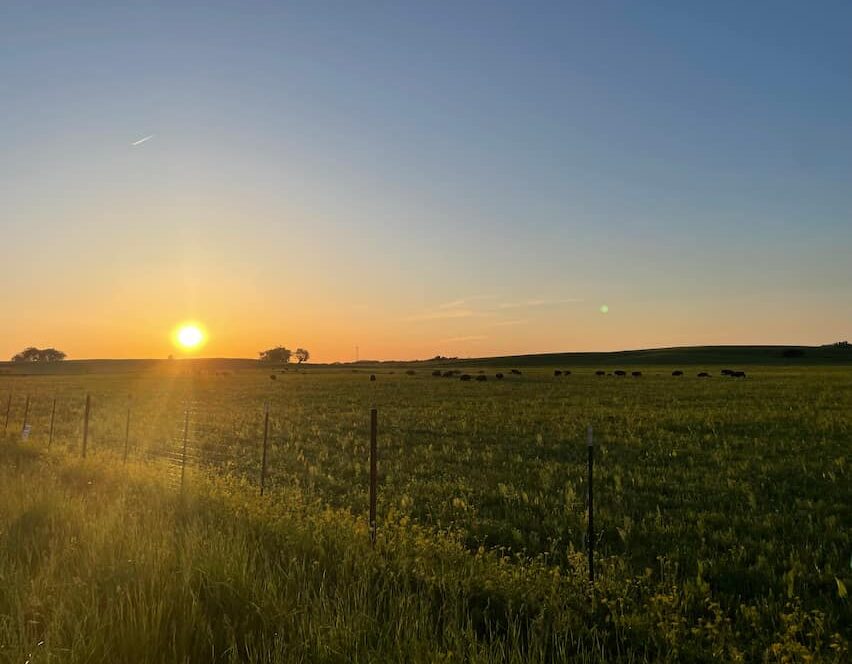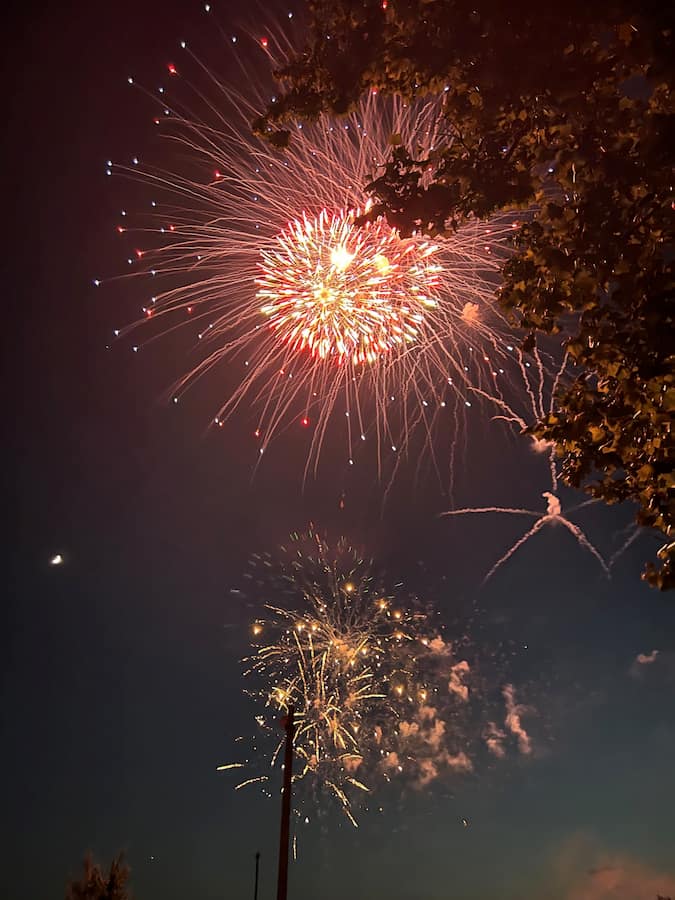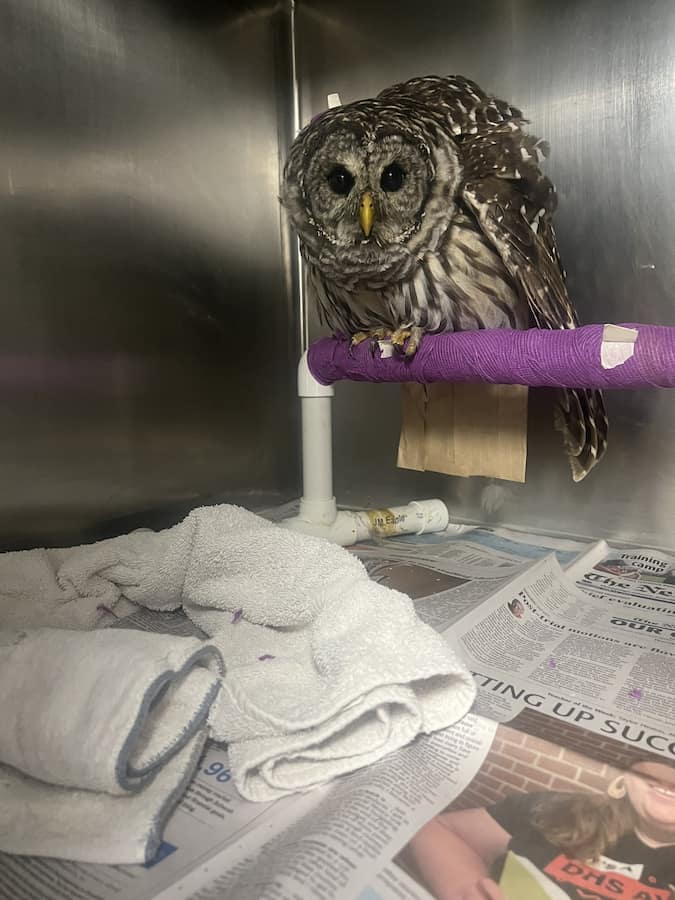Imagine: a grassland stretching as far as the eyes can see, dotted here and there with small patches of trees. Great herds of animals cross the land, grazing on the plentiful vegetation. The disturbance they cause sends insects soaring into the vast sky, where thousands of birds swoop and feast. Smoke drifts on the horizon as gentle fires sweep across the hills, sending nutrients back into the rich, dark soils. This is the landscape that once covered more than a third of America and gave Illinois its nickname “the Prairie State.” What was this iconic ecosystem that supported a vast amount of animal (and human) life, and where did it go?
What is a Prairie?
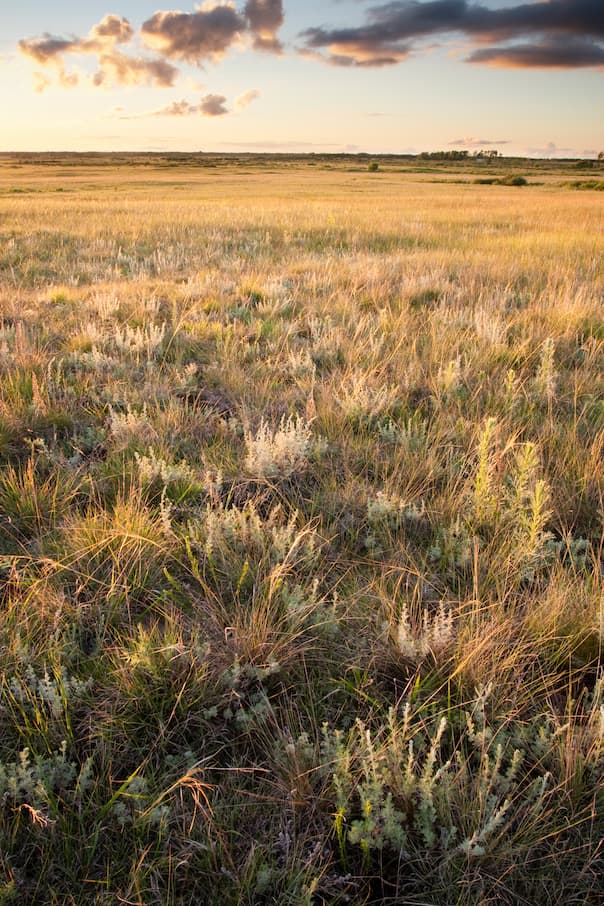
A prairie is a type of North American grassland that originally stretched from Ohio to the Rocky Mountains. It was formed in the rain shadow created by the Rockies as they stretched taller and taller, blocking the rains from the humid Pacific air from reaching the Midwest. There are three main types of prairies: shortgrass, found in the westernmost range, midgrass, found stretching from the Dakotas south to Texas, and tallgrass, the easternmost prairie that was once found across almost all of Illinois.
The tallgrass prairie was once the largest continuous ecosystem in North America, covering more than 170 million acres and supporting such a diversity of life that it was only rivaled by the Amazon Rainforest. When the glaciers of the Pleistocene (the most recent ice age) swept across Illinois, they left behind a landscape characterized by gentle hills and deep soils. This soil allowed tallgrass prairie plants to create extensive root systems that could reach more than ten feet deep, allowing them to survive in the harsh conditions prairies often experienced.
One such harsh condition that dominated the prairie: fire. During late summer and early fall, lightning strikes would ignite the landscape. The fire would burn the above-ground portions of the plants, but the deep roots would give rise to new growth next spring. The ash left behind would provide further nutrients, creating the incredibly rich soils prairies were known for. The seasonality of these fires protected plants as well, as there was never enough material built up to create massive fires whose heat could penetrate the soil. Additionally, the fires prevented tree growth, an incredibly important aspect of prairie maintenance as shade can kill prairie plants adapted to life under a constant, harsh sun.
These fires benefitted the grazing animals that called the prairie home, as new growth is more palatable and nutritious than old growth. One such grazer is our national mammal, the American Bison (Bison bison). Bison graze on the prairie grasses for nine to eleven hours per day, working their way across the landscape. Compared to cattle, bison are more efficient grazers, utilize rougher terrain that cattle cannot, consume less, and are much less likely to graze the same area more than once per season. All of this means that the estimated 21-88 million bison present prior to European settlement coexisted with the landscape and improved it, acting much like fires did to add nutrients back to the soil and clear out dense plant life.
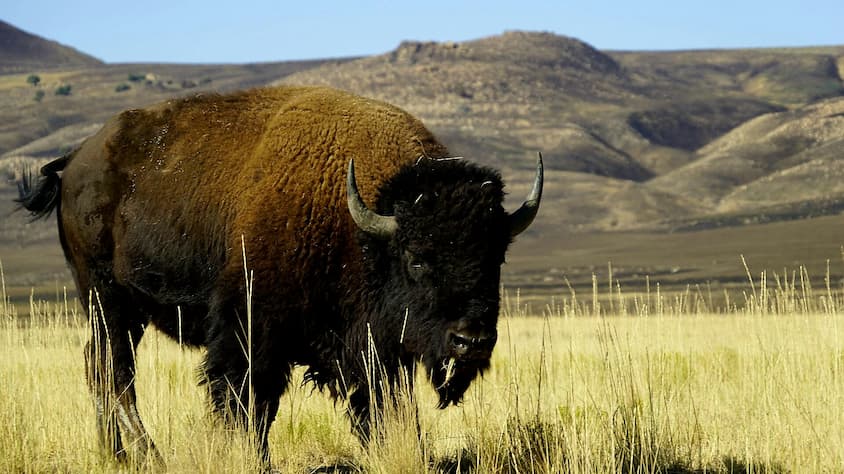
Image retrieved from Wikimedia Commons
What Happened to the Tallgrass Prairie?
When European settlers first made their way across the American west, they described the land as “park-like” and filled with endless abundance. It was this belief that led to the disappearance of the prairie and the loss of its residents.
Purposeful overhunting of bison caused the species to drop to a record low of less than a thousand individuals by the start of the 20th century, removing an important ecosystem engineer and cultural cornerstone of Indigenous tribes. It was only through the conservation work of these tribes, as well as important public and private stakeholders such as the National Park Service, that bison are once again roaming what is left of the Great Plains.
Today, the “Prairie” state is better known for its agriculture, but prior to the 19th century it was thought to be unfarmable. All that changed with the invention of the steel plow by John Deere in 1837. Previously, plows were made from cast iron. Prairie soil and roots would stick to the metal, so farmers needed to continuously stop and clean them. The steel plow was thought of as “self-cleaning,” as the thick soil did not stick to it, allowing for continuous plowing. This invention tore through the prairie, opening the doors to some of the most fertile farmland in the entire world.
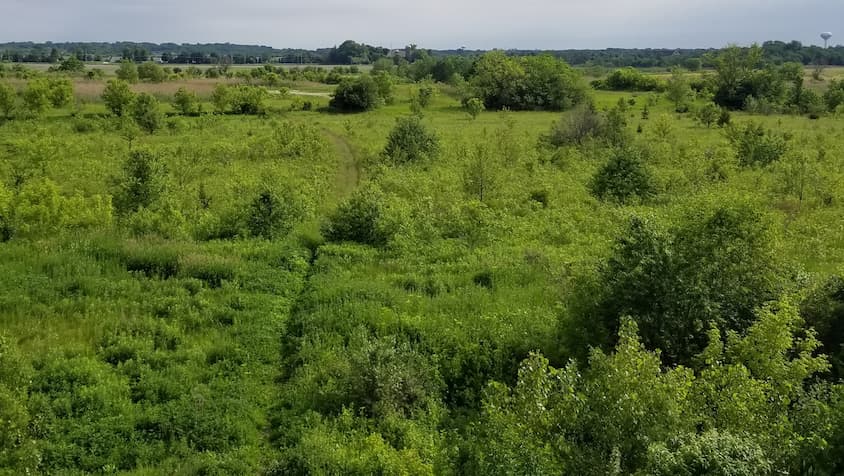
European expansion also brought about an age of fire suppression, as fire and its effects on the land were relatively unknown by settlers until very recently. It wasn’t until the Yellowstone fires of 1988, in which centuries of fire suppression and brush build up led to the largest wildfire in Yellowstone history, that fire suppression policies were abandoned in favor of prescription fire and controlled burn practices, yet logistical and legal hurdles to these practices still exist. Prairie remnants that weren’t plowed slowly disappeared under the shade of trees previously prevented by grazers and fires.
Living Up to Our Name
How do we continue to feed a growing world while protecting and maintaining our natural resources? This is one of the greatest challenges to prairie protection and restoration in Illinois and across the Midwest. This question also continues to grow in relevance as research into the carbon sequestration abilities of prairies and grasslands sheds new light on their impact; since most of a grassland’s mass is beneath the soil, restoring grasslands has the potential to trap massive amounts of carbon much faster than newly planted forests can.
To understand our impact on the prairie, we must learn from one of the most important prairie engineers: humans. Prior to European settlement, the Plains Tribes managed prairies very similarly to the newly emerging management styles today. In many cultures, September was known as the “burning moon,” the time when the prairie was purposefully set ablaze to give rise to new growth. This new growth attracted grazers closer to tribal settlements, providing ample hunting opportunities. Unlike modern fire regimes, these ones were cultural: the act of burning provided access to traditional foods and materials that were sustainably utilized for centuries.
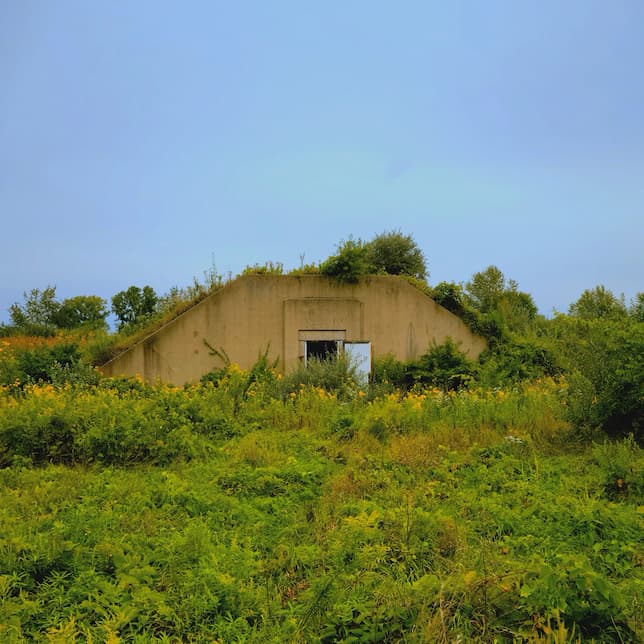
It was humans that shaped the prairies we recognize today, and it is humans that can bring them back. One important way to do that is to rethink how we utilize space. A typical grass lawn consists of only a few types of plants with very shallow root systems, in stark contrast to the deep-rooted prairie grasses. Very few animals can utilize grass lawns for food or shelter, whereas even a small area of native prairie plants can provide countless opportunities for all manner of living things. Bringing back the prairie can start in our own yards through the planting of native prairie species, many of which feature brilliant flowers and showy growth patterns that rival many non-native annuals. Utilizing plants adapted to this region also means less water and overall maintenance for the owner. It doesn’t need to stop at yards, either. Underutilized natural spaces are all around us. Along the edges of highways, underneath power lines, in the medians of parking lots: all it takes is a little soil and sun to create a patch of prairie.
Aside from physically planting new prairie, one of the most impactful ways to bring them back is to change people’s perceptions of them. Environmental education and access to high quality outdoor spaces have been positively correlated with improved awareness towards and positive attitudes regarding conservation and the environment, especially among children. One way to utilize this is to simply visit a prairie and truly take in what it has to offer. You can use the Prairie Scavenger Hunt resource featured in this article to encourage your children to explore and discover. When perceptions change and people understand and appreciate what prairies provide, conservation initiatives, public and private funding, and local, state, and federal policy changes follow.
Less than one hundredth of one percent of Illinois’ original prairies remain, but the number of new and restored prairies have steadily grown throughout the past decade. Together, through simple acts such as gardening and spreading awareness, we can finally live up to our nickname again and welcome people back to the Prairie State.
Written by Tyson, Class of 2026
Resources
Illinois Native Plant Society (illinoisplants.org)
- For information on native plants, including where to find plant sales and nurseries, visit the Illinois Native Plant Society website.
Tallgrass Prairie – Illinois Natural History Survey (publish.illinois.edu/tallgrass-prairie/)
- For information on how to landscape with prairie plants and where to find prairie remnants throughout Illinois, explore this website from the Illinois Natural History Survey.
Midewin National Tallgrass Prairie – (www.fs.usda.gov/midewin)
- To see the impact of prairie restoration and what a large prairie ecosystem looks like, visit the Midewin National Tallgrass Prairie, a part of the Chicago wilderness.
ITBC – Intertribal Buffalo Council (itbcbuffalonation.org)
- To learn more about the efforts of Indigenous tribes to improve bison populations and resecure food sovereignty, check out this website from the Intertribal Buffalo Council, a group of over eighty tribes facilitating the management of thousands of bison.
References
- 15 Facts About Bison (U.S. National Park Service). (n.d.). Retrieved October 17, 2023, from https://www.nps.gov/articles/15-facts-about-bison.htm
- A Complex Prairie Ecosystem—Tallgrass Prairie National Preserve (U.S. National Park Service). (n.d.). National Park Service: Tallgrass Prairie National Preserve, Kansas. Retrieved October 17, 2023, from https://www.nps.gov/tapr/learn/nature/a-complex-prairie-ecosystem.htm
- Dreitz, V. J., Stinson, L. T., Hahn, B. A., Tack, J. D., & Lukacs, P. M. (2017). A large-scale perspective for managing prairie avifauna assemblages across the western US: Influences of habitat, land ownership and latitude. PeerJ, 5, e2879. https://doi.org/10.7717/peerj.2879
- Anderson, R. C., & Anderson, M. R. (1975). The Presettlement Vegetation of Williamson County, Illinois. Castanea, 40(4), 345–363.
- Ardoin, N. M., Bowers, A. W., & Gaillard, E. (2020). Environmental education outcomes for conservation: A systematic review. Biological Conservation, 241, 108224. https://doi.org/10.1016/j.biocon.2019.108224
- Aune, K., Jørgensen, D., & Gates, C. (2016). IUCN Red List of Threatened Species: Bison bison. IUCN Red List of Threatened Species. https://www.iucnredlist.org/en
- Axelrod, D. I. (1985). Rise of the grassland biome, central North America. The Botanical Review, 51(2), 163–201. https://doi.org/10.1007/BF02861083
- Bach, E. M., & Kleiman, B. P. (2021). Twenty years of tallgrass prairie restoration in northern Illinois, USA. Ecological Solutions and Evidence, 2(4), e12101. https://doi.org/10.1002/2688-8319.12101
- Black Soil Prairie. (n.d.). Illinois Department of Natural Resources. Retrieved October 17, 2023, from https://dnr.illinois.gov/education/cdhabitatmain/cdhabitatblacksoil.html
- Copeland, T. E., Sluis, W., & Howe, H. F. (2002). Fire Season and Dominance in an Illinois Tallgrass Prairie Restoration. Restoration Ecology, 10(2), 315–323. https://doi.org/10.1046/j.1526-100X.2002.02023.x
- Frost, C. C. (n.d.). Presettlement fire frequency regimes of the United States: A first approximation. Fire in Ecosystem Management: Shifting the Paradigm from Suppression to Prescription, 70–81.
- Garfinkel, M., Hosler, S., Whelan, C., & Minor, E. (2022). Powerline Corridors Can Add Ecological Value to Suburban Landscapes When Not Maintained as Lawn. Sustainability, 14(12), Article 12. https://doi.org/10.3390/su14127113
- History and Mission – ITBC. (n.d.). Retrieved October 17, 2023, from https://itbcbuffalonation.org/history-and-mission/
- Illinois’ Grand Prairie: Protecting and Re-creating the Tallgrass Ecosystem. (n.d.). Retrieved September 28, 2023, from https://outdoor.wildlifeillinois.org/articles/undefined/illinois-grand-prairie-protecting-and-re-creating-the-tallgrass-ecosystem
- Landscaping with native plants – Tallgrass Prairie. (n.d.). Retrieved September 28, 2023, from https://publish.illinois.edu/tallgrass-prairie/landscaping-with-native-plants/
- Miller, K. (2002). Planning for Bison Grazing on Native Rangeland. USDA – Natural Resources Conservation Service. https://efotg.sc.egov.usda.gov/references/public/NE/Range_and_Pasture_Technical_Note_12.pdf
- Nature—Tallgrass Prairie National Preserve (U.S. National Park Service). (n.d.). National Park Service: Tallgrass Prairie National Preserve, Kansas. Retrieved October 17, 2023, from https://www.nps.gov/tapr/learn/nature/index.htm
- Ontl, T., & Janowiak, M. (2017). Grassland and Carbon Management. U.S. Department of Agriculture, Forest Service, Climate Change Resource Center. https://www.fs.usda.gov/ccrc/topics/grassland-carbon-management
- Purakayastha, T. J., Huggins, D. R., & Smith, J. L. (2008). Carbon Sequestration in Native Prairie, Perennial Grass, No-Till, and Cultivated Palouse Silt Loam. Soil Science Society of America Journal, 72(2), 534–540. https://doi.org/10.2136/sssaj2005.0369
- Ries, L., Debinski, D. M., & Wieland, M. L. (2001). Conservation Value of Roadside Prairie Restoration to Butterfly Communities. Conservation Biology, 15(2), 401–411. https://doi.org/10.1046/j.1523-1739.2001.015002401.x
- The Prairie Roots Project | Tallgrass Prairie Center. (n.d.). Retrieved October 17, 2023, from https://www.tallgrassprairiecenter.org/prairie-roots-project
- Tribal and Indigenous Fire Tradition. (2021, November 16). US Forest Service. https://www.fs.usda.gov/features/tribal-and-indigenous-heritage
- Weber, K. T. (2001). Historic Bison Populations: A GIS-Based Estimate. https://giscenter.isu.edu/Research/Projects/BisonPaper.pdf
- Where to see prairies – Tallgrass Prairie. (n.d.). Retrieved September 28, 2023, from https://publish.illinois.edu/tallgrass-prairie/where-to-see-prairies/

